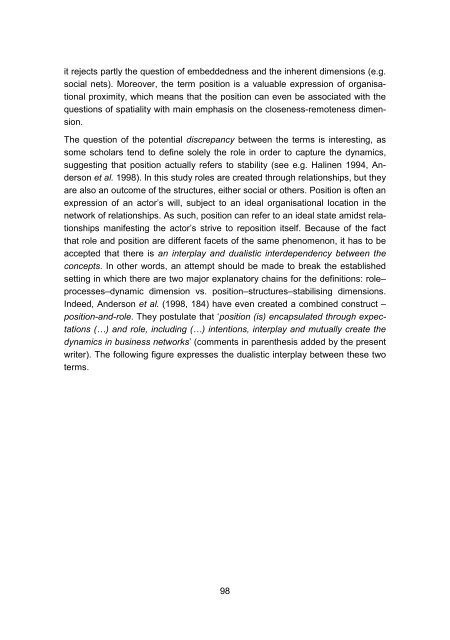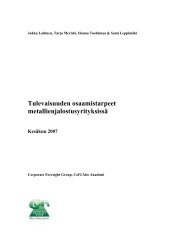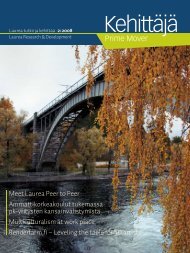849954 sisus
849954 sisus
849954 sisus
You also want an ePaper? Increase the reach of your titles
YUMPU automatically turns print PDFs into web optimized ePapers that Google loves.
it rejects partly the question of embeddedness and the inherent dimensions (e.g.<br />
social nets). Moreover, the term position is a valuable expression of organisational<br />
proximity, which means that the position can even be associated with the<br />
questions of spatiality with main emphasis on the closeness-remoteness dimension.<br />
The question of the potential discrepancy between the terms is interesting, as<br />
some scholars tend to define solely the role in order to capture the dynamics,<br />
suggesting that position actually refers to stability (see e.g. Halinen 1994, Anderson<br />
et al. 1998). In this study roles are created through relationships, but they<br />
are also an outcome of the structures, either social or others. Position is often an<br />
expression of an actor’s will, subject to an ideal organisational location in the<br />
network of relationships. As such, position can refer to an ideal state amidst relationships<br />
manifesting the actor’s strive to reposition itself. Because of the fact<br />
that role and position are different facets of the same phenomenon, it has to be<br />
accepted that there is an interplay and dualistic interdependency between the<br />
concepts. In other words, an attempt should be made to break the established<br />
setting in which there are two major explanatory chains for the definitions: role–<br />
processes–dynamic dimension vs. position–structures–stabilising dimensions.<br />
Indeed, Anderson et al. (1998, 184) have even created a combined construct –<br />
position-and-role. They postulate that ‘position (is) encapsulated through expectations<br />
(…) and role, including (…) intentions, interplay and mutually create the<br />
dynamics in business networks’ (comments in parenthesis added by the present<br />
writer). The following figure expresses the dualistic interplay between these two<br />
terms.<br />
98








